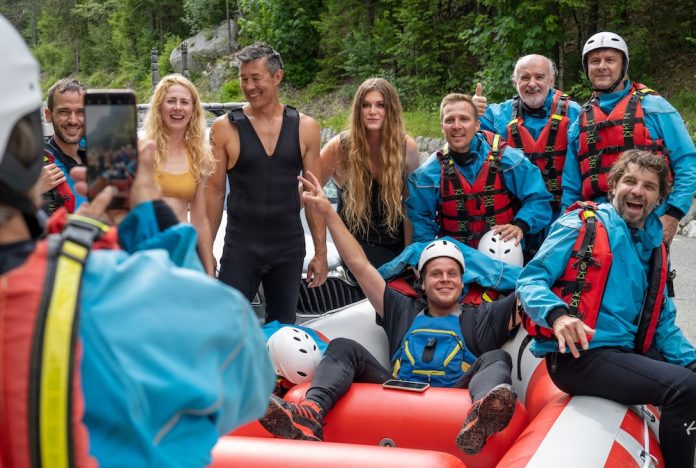Glance around your office (if you still go to a traditional office) and ask yourself how many of your colleagues would like to climb to the top of the Sydney Harbor Bridge? Who would be brave enough to take a polar plunge in a frigid Canadian lake? Which of your workmates would embrace a daylong jeep tour of a rainforest? Who would be up for a hands-on New Orleans cooking class, and who would tell you they’d rather set their hair on fire?
Now you can empathize with the planners of corporate- sponsored incentive travel experiences in a work world that includes four generations and at least 40 times that many ideas of how to enjoy four or five days on a group travel event that’s meant to reward top performers.
“It’s one of the biggest challenges for program owners today, and one reason why I’m such an advocate for surveying the potential participants in your organization both before and after you put a program together,” said Stephanie Harris, president of the Incentive Research Foundation (IRF).
As the adage states, when you assume, you make an ass out of “u” and “me.” You may have 60-somethings on your team who will beat the whole group to the top of Sydney Harbor Bridge and Gen Zers who would rather lounge poolside than zipline over a crocodile pit in Mexico.
Know the Trends
There is one safe assumption you can make: Workers who have earned their way on an incentive travel experience want it to be unique, memorable and worth the effort they invested to earn their place on the trip.
Companies that sponsor incentive travel programs typically play some role in key decisions, such as destination choice and selection of activities. Much of it, however, is left to professional incentive and meeting planning providers. It’s imperative, when working with an incentive travel supplier, that they know the demographics of your prospective participants and demonstrate a knowledge of trends in travel by the various generations.
Skift Research, which produces comprehensive reports on travel trends (including business and meeting travel), published a report last year on the travel habits of Gen Z and Millennials. Insights culled from the report are valuable when planning a group incentive trip that will include younger workers.
Pertinent findings include:
- The majority of U.S. Millennials and Gen Zers (84%) opt for domestic travel while more than 50% of respondents from Germany and the U.K. embarked on international trips. (Keep in mind that traveling to different countries in Europe is easier than in the U.S.)
- The top five domestic destinations for Gen Z and Millennials in the U.S. are Florida, California, Texas, New York and Georgia.
- The data reveals a shared urban preference among respondents from the U.S., U.K. and Germany, with over half favoring large cities.
- Instagram and YouTube are the top social media platforms used by Millennials and Gen Z for “travel inspiration” and planning. This is important for program planners to be mindful of when designing how to promote an incentive travel program and keep it top of mind during the qualifying period.
- More than one-third (35%) of U.S. respondents prefer free and independent travel over complete packaged tours (26%).
- Both Millennials and Gen Z prioritize wellness-related activities into their travel itineraries. This includes seeking out scenic beauty (seems in conflict with the preference for urban settings), healthy and nutritious cuisine, and assessing the quality of spa and wellness facilities.
How Do You Define ‘Adventure?’
Travelers of all ages are increasingly enjoying so-called adventure travel and outdoor activities. Skift reports 38% of U.S. respondents to their Millennial/Gen Z survey say they are “very interested” in adventure and outdoor travel; another 40% report they are “interested.”
According to Skift, connecting with nature emerges as the predominant factor (20%) driving Millennials and Gen Z to participate in adventure travel tourism, followed closely by exploring new destinations (15%) and seeking personal challenge and achievement (12%).
Stephanie Harris of the IRF said no matter the age of program participants, “thrill” activities provide a way for companies to create an experience that participants would have difficulty duplicating on their own, which should be an important objective of incentive travel programs. Put the bargaining power of your corporate group to good use.
In this case, “thrill” can refer to a physical activity or simply an experience that is completely unique. Gaining private access to a museum or sports stadium, for example, or backstage passes to a Taylor Swift concert or similar event is a travel experience that most individuals cannot obtain on their own.
Thrill activities also can still involve those who don’t wish to participate in the activity itself. Harris participated in a small group program in Canada that included a polar dip into the glacial waters of Lake Louise in Alberta. Participants and non- dippers as well wore custom robes and met lakeside for a bonding event that was a trip highlight, Harris said.
Think Extended Family Vacation Planning
If your office mates are your family away from home, it makes sense to think of planning an incentive travel program as a multigenerational family trip. In recounting a trip to Italy that she helped plan for several generations of her family, Washington Post travel editor Amanda Finnegan captured both the joy and anxiety it entailed.
“Multigenerational family trips can bring some of life’s most cherished moments — but also some of its most stressful. You’re wrangling various levels of stamina, budgets, interests and eating preferences, not to mention trying to get everyone to one place,” she stated.
Professional trip planners who Finnegan spoke with advise planners to gather input regarding goals of a trip from all generations of the group and work backwards from there. Set realistic expectations about covering (or more accurately, not covering) every individual’s wishlist. (See sidebar for key tips on multigenerational trip planning.)
“Sharing a multigenerational trip is more than a vacation; it’s an experience that brings [people] together, forging bonds through shared adventures and discoveries,” writes travel education consultant Erica Forrest. “By prioritizing clear communication, choosing the right destination, getting everyone invested, and carefully selecting activities, accommodations and considering health and safety, you lay the groundwork for a trip that transcends the ordinary. Remember, the magic of these trips lies not just in the places you visit, but in the moments you share and the connections you deepen.”






